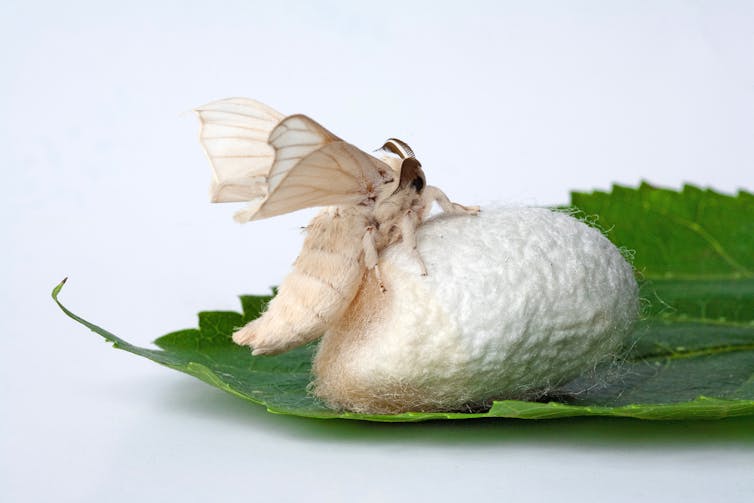
Sophie Bassouls/Sygma via Getty Images
Roger J. Kreuz, University of Memphis
How will the internet evolve in the coming decades?
Fiction writers have explored some possibilities.
In his 2019 novel “Fall,” science fiction author Neal Stephenson imagined a near future in which the internet still exists. But it has become so polluted with misinformation, disinformation and advertising that it is largely unusable.
Characters in Stephenson’s novel deal with this problem by subscribing to “edit streams” – human-selected news and information that can be considered trustworthy.
The drawback is that only the wealthy can afford such bespoke services, leaving most of humanity to consume low-quality, noncurated online content.
To some extent, this has already happened: Many news organizations, such as The New York Times and The Wall Street Journal, have placed their curated content behind paywalls. Meanwhile, misinformation festers on social media platforms like X and TikTok.
Stephenson’s record as a prognosticator has been impressive – he anticipated the metaverse in his 1992 novel “Snow Crash,” and a key plot element of his “Diamond Age,” released in 1995, is an interactive primer that functions much like a chatbot.
On the surface, chatbots seem to provide a solution to the misinformation epidemic. By dispensing factual content, chatbots could supply alternative sources of high-quality information that aren’t cordoned off by paywalls.
Ironically, however, the output of these chatbots may represent the greatest danger to the future of the web – one that was hinted at decades earlier by Argentine writer Jorge Luis Borges.
The rise of the chatbots
Today, a significant fraction of the internet still consists of factual and ostensibly truthful content, such as articles and books that have been peer-reviewed, fact-checked or vetted in some way.
The developers of large language models, or LLMs – the engines that power bots like ChatGPT, Copilot and Gemini – have taken advantage of this resource.
To perform their magic, however, these models must ingest immense quantities of high-quality text for training purposes. A vast amount of verbiage has already been scraped from online sources and fed to the fledgling LLMs.
The problem is that the web, enormous as it is, is a finite resource. High-quality text that hasn’t already been strip-mined is becoming scarce, leading to what The New York Times called an “emerging crisis in content.”
This has forced companies like OpenAI to enter into agreements with publishers to obtain even more raw material for their ravenous bots. But according to one prediction, a shortage of additional high-quality training data may strike as early as 2026.
As the output of chatbots ends up online, these second-generation texts – complete with made-up information called “hallucinations,” as well as outright errors, such as suggestions to put glue on your pizza – will further pollute the web.
And if a chatbot hangs out with the wrong sort of people online, it can pick up their repellent views. Microsoft discovered this the hard way in 2016, when it had to pull the plug on Tay, a bot that started repeating racist and sexist content.
Over time, all of these issues could make online content even less trustworthy and less useful than it is today. In addition, LLMs that are fed a diet of low-calorie content may produce even more problematic output that also ends up on the web.
An infinite − and useless − library
It’s not hard to imagine a feedback loop that results in a continuous process of degradation as the bots feed on their own imperfect output.
A July 2024 paper published in Nature explored the consequences of training AI models on recursively generated data. It showed that “irreversible defects” can lead to “model collapse” for systems trained in this way – much like an image’s copy and a copy of that copy, and a copy of that copy, will lose fidelity to the original image.
How bad might this get?
Consider Borges’ 1941 short story “The Library of Babel.” Fifty years before computer scientist Tim Berners-Lee created the architecture for the web, Borges had already imagined an analog equivalent.
In his 3,000-word story, the writer imagines a world consisting of an enormous and possibly infinite number of hexagonal rooms. The bookshelves in each room hold uniform volumes that must, its inhabitants intuit, contain every possible permutation of letters in their alphabet.

aire images/Moment via Getty Images
Initially, this realization sparks joy: By definition, there must exist books that detail the future of humanity and the meaning of life.
The inhabitants search for such books, only to discover that the vast majority contain nothing but meaningless combinations of letters. The truth is out there –but so is every conceivable falsehood. And all of it is embedded in an inconceivably vast amount of gibberish.
Even after centuries of searching, only a few meaningful fragments are found. And even then, there is no way to determine whether these coherent texts are truths or lies. Hope turns into despair.
Will the web become so polluted that only the wealthy can afford accurate and reliable information? Or will an infinite number of chatbots produce so much tainted verbiage that finding accurate information online becomes like searching for a needle in a haystack?
The internet is often described as one of humanity’s great achievements. But like any other resource, it’s important to give serious thought to how it is maintained and managed – lest we end up confronting the dystopian vision imagined by Borges.
Roger J. Kreuz, Associate Dean and Professor of Psychology, University of Memphis
This article is republished from The Conversation under a Creative Commons license. Read the original article.































































